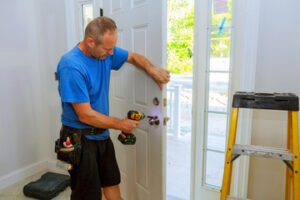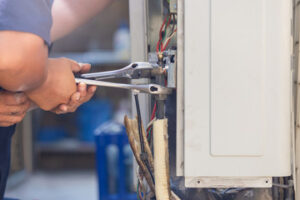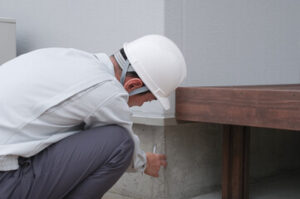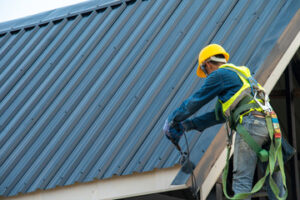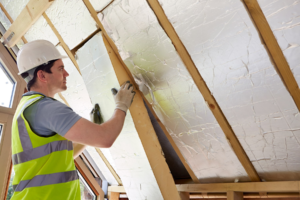Junk removal is an essential service that helps individuals and businesses clear out unwanted items, debris, and clutter from homes, offices, and other spaces. It is a process that involves collecting, transporting, and disposing of materials that are no longer needed or have outlived their usefulness.

Many people accumulate items over time, whether through renovations, moving, or simply everyday life, and eventually, these items can become overwhelming. Proper junk removal ensures that spaces remain clean, organized, and free from unnecessary waste that can take up valuable room and create an unsightly environment. Contact Junk Removal Temecula CA for professional help.
The need for junk removal arises for a variety of reasons, and people often find themselves in situations where they have excessive amounts of unwanted items. Homeowners who are decluttering may need to dispose of old furniture, broken appliances, or outdated electronics. Businesses may need to clear out old office equipment, excess inventory, or construction debris. Even rental property owners may require junk removal services when tenants leave behind belongings they no longer want. The process can be physically demanding and time-consuming, making it difficult for individuals to handle on their own, especially when dealing with large or heavy objects.
One of the significant benefits of junk removal is the positive impact it has on the environment. Many items that people discard can be recycled, repurposed, or donated rather than being sent directly to landfills. Responsible junk removal services often sort through collected materials to ensure that anything that can be reused finds a new purpose. Metal, wood, plastics, and electronics are among the materials that can be salvaged and processed appropriately. Donating items that are still in good condition to charities or individuals in need is another way to reduce waste while helping others. By ensuring that as much material as possible is diverted from landfills, junk removal contributes to a more sustainable and eco-friendly approach to waste management.
Safety is another crucial aspect of junk removal, as improperly handling or storing unwanted materials can pose risks. Piles of junk can create hazards in homes, workplaces, or outdoor spaces, increasing the risk of accidents such as trips, falls, or even fires. Certain materials, such as chemicals, batteries, or electronics, may contain hazardous components that require special handling to prevent environmental contamination or health risks. Professional junk removal services have the expertise and equipment to safely dispose of these materials, ensuring that harmful substances do not end up in places where they can cause damage to people or the ecosystem.
In addition to safety and environmental benefits, junk removal also plays a role in improving mental well-being. Clutter can contribute to stress, anxiety, and a lack of focus, making it difficult for individuals to relax or be productive. A clean and organized space promotes a sense of clarity and control, which can have a positive impact on overall mental health. People often feel a sense of relief and accomplishment after clearing out unnecessary items, allowing them to enjoy their living or working environments more comfortably. The process of letting go of unused possessions can be liberating, providing a fresh start and a renewed sense of order.
The logistics of junk removal depend on the type and volume of materials being discarded. Some individuals may opt to handle the process themselves by renting a truck, hauling items to disposal facilities, and sorting recyclables. However, this approach can be labor-intensive and may require knowledge of local disposal regulations. Hiring a professional junk removal service simplifies the process, as trained personnel handle all aspects, from lifting and loading to transportation and disposal. These services often offer flexible scheduling, allowing customers to arrange for pickups at their convenience. Additionally, they have the necessary tools and expertise to remove large, heavy, or bulky items without causing damage to the surrounding area.
Junk removal is particularly important in cases of estate cleanouts, foreclosures, or renovations. When a property changes ownership or undergoes major modifications, there is often a significant amount of waste that needs to be removed quickly and efficiently. In these situations, professional junk removal services ensure that the space is cleared out promptly, making way for new occupants or construction work. This service is invaluable for individuals who may be dealing with emotional stress from events such as the passing of a loved one, as handling the disposal of personal belongings can be overwhelming.
Construction and renovation projects also generate large amounts of debris, including materials such as wood, drywall, metal, and concrete. Proper disposal of these materials is essential to maintaining a safe work environment and preventing construction sites from becoming cluttered. Contractors and homeowners rely on junk removal services to haul away waste, allowing them to focus on completing their projects without the added burden of debris management. Recycling construction materials further reduces waste and contributes to sustainable building practices.
In urban areas, junk removal is particularly relevant due to limited living and storage spaces. Many people reside in apartments or condominiums where accumulating large amounts of junk is not feasible. Regular junk removal helps individuals manage their belongings and avoid overcrowding their living areas. In commercial settings, businesses must maintain clean and organized workspaces to ensure efficiency and compliance with safety regulations. Regular removal of outdated equipment, unused supplies, and excess inventory prevents clutter from interfering with daily operations.
There are different methods for disposing of junk, including landfill disposal, recycling, and donation. While landfills remain a common option, they are not the most environmentally friendly solution, as they contribute to pollution and space consumption. Recycling is a preferable alternative, as it allows materials to be processed and repurposed rather than discarded. Many junk removal services prioritize recycling to minimize their environmental impact. Donation is another ethical way to handle unwanted items, as furniture, clothing, and household goods that are still in good condition can benefit those in need. Many organizations accept donated goods and distribute them to families, shelters, or community centers.
The cost of junk removal services varies depending on factors such as the volume of items, location, and complexity of removal. Some companies charge based on the amount of space the junk takes up in a truck, while others may have flat rates for specific services. Additional charges may apply for handling hazardous materials or heavy lifting. While hiring a junk removal service may involve an upfront cost, the convenience, efficiency, and time savings often make it a worthwhile investment. It eliminates the hassle of arranging for transportation and disposal while ensuring that items are handled responsibly.
Technology has also influenced the junk removal industry, making it easier for individuals to schedule services and track disposal efforts. Many companies offer online booking systems where customers can select pickup dates, describe their items, and receive cost estimates. Some services even provide tracking options to show where items are taken for disposal or recycling. This transparency helps build trust with customers and encourages responsible waste management practices. As environmental concerns continue to grow, technology-driven solutions may further enhance the efficiency and sustainability of junk removal processes.
Junk removal is more than just disposing of unwanted items; it is a critical service that promotes cleanliness, safety, and environmental responsibility. By removing clutter, people can create more functional and enjoyable spaces while reducing stress and health risks. The responsible handling of waste through recycling and donation benefits both individuals and the community, contributing to a more sustainable future. Whether clearing out a home, an office, or a construction site, effective junk removal ensures that spaces remain organized and free from unnecessary waste. With increasing awareness of environmental issues, the industry continues to evolve, offering more eco-friendly and efficient solutions for waste disposal. Junk removal plays an essential role in modern society, helping people manage their belongings while making a positive impact on the environment and overall well-being.


